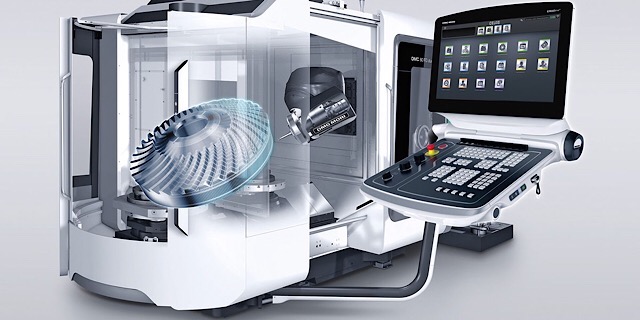The manufacturing industry is critical to the global economy but faces increasing security challenges. According to a recent study by the National Association of Manufacturers, 38% of manufacturers reported being impacted by cyberattacks in 2023, resulting in operational disruptions and financial losses. Additionally, the Association for Advancing Automation found that theft and vandalism accounted for over $1 billion in losses across U.S. manufacturing facilities last year.
These statistics highlight the pressing need for effective security strategies. This article provides five practical security tips to help manufacturers address risks and protect their operations, assets, and employees.
Why Security is Important for Manufacturing Industries
Security is essential for manufacturing industries to protect assets, ensure operational continuity, and comply with regulations. Facilities often house expensive machinery, raw materials, and finished products that can be targets for theft or vandalism.
Cyberattacks are another growing risk, with many manufacturers reporting operational disruptions and financial losses due to data breaches. Security measures also help prevent workplace accidents, unauthorized access, and damage to property, ensuring smooth operations and safety for employees and visitors.
Additionally, meeting security standards is often required to maintain trust with clients and partners and to avoid legal penalties.
5 Security Tips for Manufacturing Industries
1. Implement Advanced Surveillance Systems
Surveillance systems are the foundation of manufacturing security solutions. High-definition (HD) cameras provide clear visual records, which are critical for monitoring daily operations, deterring unauthorized activities, and investigating incidents. Advanced systems with features such as motion detection or artificial intelligence (AI) capabilities enhance monitoring efficiency by automatically identifying and alerting staff to unusual behavior, such as unauthorized access or suspicious movements.
To maximize the effectiveness of surveillance systems, cameras should be positioned strategically. Cover key entry and exit points, production lines, and high-value storage areas. Outdoor cameras can monitor perimeters, while indoor cameras focus on areas prone to unauthorized activity or potential safety risks. Integrating the system with remote monitoring ensures that security teams can respond promptly to incidents, even outside working hours.
2. Restrict Access to Sensitive Areas
Manufacturing facilities often include areas that require restricted access, such as production floors, server rooms, and storage spaces for raw materials or finished products. Controlling who can enter these areas is vital for preventing theft, tampering, or unauthorized activity.
Access control systems can include keycards, biometric authentication (fingerprints or facial recognition), or PIN-based entry. These systems ensure that only authorized personnel can enter sensitive zones. Regularly update access permissions to reflect changes in staff roles, terminations, or onboarding. Reviewing access logs can help identify potential security breaches or unusual activity, enabling proactive measures to address risks.
3. Safeguard Digital and Physical Assets
In the digital age, protecting both digital and physical assets is crucial for manufacturing facilities. Digital assets, such as proprietary data, designs, and production schedules, are targets for cyberattacks. To prevent data breaches, implement robust cybersecurity measures such as encryption, firewalls, and antivirus software. Regularly update systems to patch vulnerabilities and back up critical data to minimize losses in case of an attack.
Physical assets, including equipment, inventory, and raw materials, should also be secured. Use locked storage spaces, RFID tracking, or inventory management systems to monitor and control access to valuable items. Conduct regular audits of physical and digital assets to identify vulnerabilities and take corrective action as needed.
4. Train Employees on Security Protocols
Employees play a critical role in maintaining security within a manufacturing facility. Without proper training, even the most advanced security systems can be undermined. Start by providing clear guidelines on security procedures, such as handling sensitive information, using access control systems, and reporting suspicious activities.
Regular training sessions help employees stay updated on new threats, such as phishing scams or social engineering tactics. Conduct periodic drills to prepare staff for emergencies like fires, breaches, or cyberattacks. Establish a culture of accountability by encouraging employees to report concerns promptly and ensuring they understand the consequences of non-compliance with security policies.
5. Partner with Professional Security Services
Collaborating with professional security firms can strengthen a facility’s overall security posture. These firms offer specialized expertise, 24/7 monitoring, and advanced tools like video analytics and remote alarm systems. They can also provide rapid incident response, minimizing the impact of security breaches or emergencies.
Before selecting a provider, evaluate their experience with manufacturing facilities and their ability to offer tailored solutions. Professional security services can also assist in conducting risk assessments, identifying vulnerabilities, and recommending upgrades to existing systems. This partnership ensures comprehensive protection and allows internal teams to focus on operational priorities.
FAQs: Security for Manufacturing Industries
1. Why is security important for manufacturing industries?
Security is important to protect valuable assets, prevent theft and vandalism, ensure operational continuity, and safeguard sensitive data. It also helps maintain compliance with regulations and builds trust with stakeholders.
2. What are common security risks in manufacturing facilities?
Common risks include theft of raw materials or finished goods, unauthorized access to sensitive areas, data breaches, cyberattacks, vandalism, and workplace safety incidents.
3. What is the role of surveillance systems in manufacturing security?
Surveillance systems monitor activities in real time, deter unauthorized actions, and provide video evidence for investigations. Advanced systems with AI capabilities can detect unusual behaviors and alert staff to potential risks.
Conclusion
Security is a critical aspect of managing manufacturing facilities, as it directly impacts the protection of assets, operational continuity, and compliance with regulations. By implementing advanced surveillance systems, controlling access to sensitive areas, safeguarding both digital and physical assets, training employees on security protocols, and partnering with professional security services, manufacturers can significantly reduce risks and ensure a safe working environment.
A proactive approach to security not only minimizes potential disruptions but also helps build trust with employees, clients, and stakeholders. As threats continue to evolve, regularly reviewing and updating security measures will be key to maintaining a secure and efficient manufacturing operation.



 Bitcoin
Bitcoin  Ethereum
Ethereum  Tether
Tether  XRP
XRP  Solana
Solana  USDC
USDC  TRON
TRON  Lido Staked Ether
Lido Staked Ether  Cardano
Cardano  Avalanche
Avalanche  Toncoin
Toncoin